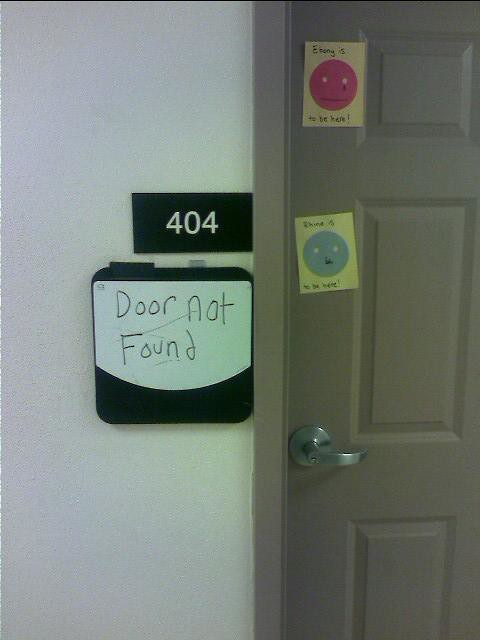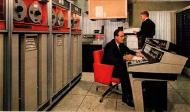 Anyone who’s spent time near an internet connection is familiar with the 404 error, a webserver’s way of saying you’ve reached a dead end. What’s less well known is that this very error is what allowed the World Wide Web to exist in the first place.
Anyone who’s spent time near an internet connection is familiar with the 404 error, a webserver’s way of saying you’ve reached a dead end. What’s less well known is that this very error is what allowed the World Wide Web to exist in the first place.
The history of 404
1. The History of Hyperlink
Before the beginning of time, when the Internet was still very bare, an ambitious group of young scientists at CERN (Switzerland) started working on the World Wide Web, later to be known as WWW, or simply ‘the Web’. Their aim: to create a database infrastructure that offered open access to data in various formats: multi-media. The ultimate goal was to create a protocol that would combine text and pictures and present it as one document, and allow linking to other such documents: hypertext. The idea of hypertext, or text with followable links to other content, predates networked computers by decades.
2. The Modern Web Takes Shape
These systems came with limitations, the biggest being that they were limited to single computers. But with the rise of computer networks, links from documents on one computer to documents on another were a natural extension. Even so, it wasn’t until 1989 that CERN contractor Tim Berners-Lee invented the World Wide Web.
The bright young minds at CERN were reluctant to reveal their progress (and setbacks) to the world, they started developing their protocol in a closed environment: CERN’s internal network. Many hours were spend on what later became the world-wide standard for multimedia documents. Using the physical layout of CERN’s network and buildings as a metaphor for the ‘real world’ they situated different functions of the protocol in different offices within CERN.
Keeping the hyperlinks consistent was very helpful for the user. It was also easy enough to do when all the data resided on a single computer or small network. But in a large network of computers, you’d need one central authority where all documents and links would be registered. For a while, this issue received little attention.
A few projects did allow one-way links from one machine to another without a central authority, but they still assumed that these links would be maintained as part of a team’s cohesive document authoring process.
Turns out, there was a much simpler answer.
 3. The Birth of “404 Not Found”
3. The Birth of “404 Not Found”
In an office on the fourth floor (room 404), they placed the World Wide Web’s central database: any request for a file was routed to that office, where two or three people would manually locate the requested files and transfer them, over the network, to the person who made that request.
To explain, in the brave new World Wide Web, the only place where information about a link lived was in the document containing the link. If the target document moved or changed, it was up to the linking document to update accordingly. Or to do nothing.
Of course, this setup means that links might point to data that didn’t exist. Thus, the 404 error was born. Berners-Lee embraced the notion of missing content and just provided an official error code for when it occurred – a standard message: ‘Room 404: file not found‘.
The room numbers remained in the error codes in the official release of HTTP (Hyper Text Transfer Protocol) when the Web left CERN to conquer the world, and are still displayed when a browser makes a faulty request to a Web server. In memory of the heroic boys and girls that worked deep into the night for all those months, in those small and hot offices at CERN, Room 404 is preserved as a ‘place on the Web’. None of the other rooms are still used for the Web. Room 404 is the only and true monument to the beginning of the Web, a tribute to a place in the past, where the future was shaped.
